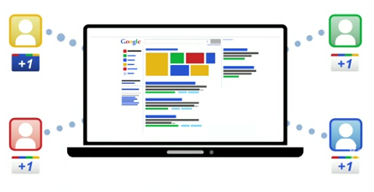The From Line
 Google recently announced a change in their privacy policies. The new format will combine existing privacy policies into one, gathering customer data from all of its services including search, Gmail, YouTube, Google+, and Google Docs. Essentially Google is making a move to be more competitive with the likes of Facebook who has been collecting a wider spectrum of data while providing its customers a more personal experience. Having a unified privacy policy that applies to all products will allow for data integration across multiple mediums and will improve the personalization of a user’s experience. So what does this mean for marketers? Overtime customers will become desensitized to such policies as the all inclusive privacy model becomes the norm. Google is leading the way and opening the flood gates for other marketers to revamp their privacy policies as well.
Google recently announced a change in their privacy policies. The new format will combine existing privacy policies into one, gathering customer data from all of its services including search, Gmail, YouTube, Google+, and Google Docs. Essentially Google is making a move to be more competitive with the likes of Facebook who has been collecting a wider spectrum of data while providing its customers a more personal experience. Having a unified privacy policy that applies to all products will allow for data integration across multiple mediums and will improve the personalization of a user’s experience. So what does this mean for marketers? Overtime customers will become desensitized to such policies as the all inclusive privacy model becomes the norm. Google is leading the way and opening the flood gates for other marketers to revamp their privacy policies as well.
Takeaway: The winners will balance privacy with increased value through personalization.
In order to make this work to your advantage, you will need to reassess your privacy policies and find a balance that customers are comfortable with. Most privacy policies were created between 2001 and 2005 when the public was still sensitive about this subject and therefore are due for a makeover. However, in order for a revamped privacy policy to provide balanced benefits, it must be carefully tailored to fit the behaviors and comfort levels of its customers. You will need to dig into your existing policies and adjust accordingly.
 Google recently introduced its newest feature upgrade, Google Search Plus Your World, or Search+ for short. Essentially this feature will draw information for search results based on social circles and interaction. (research by Nielsen suggests that 42% of people trust search results, but 90% trust recommendations from friends). So far, Search+ pulls heavily from Google+ users, but not yet from Twitter or Facebook. The feature, which aims to “improve quality of search results through increased trustworthiness and personalization”, appears to be Google’s way of gaining market share in social networking.
Google recently introduced its newest feature upgrade, Google Search Plus Your World, or Search+ for short. Essentially this feature will draw information for search results based on social circles and interaction. (research by Nielsen suggests that 42% of people trust search results, but 90% trust recommendations from friends). So far, Search+ pulls heavily from Google+ users, but not yet from Twitter or Facebook. The feature, which aims to “improve quality of search results through increased trustworthiness and personalization”, appears to be Google’s way of gaining market share in social networking.
Takeaway: +1 will have impact on other channels besides search and social.
Of course this change in search results is only applicable to users with Google accounts and can easily be turned off by clicking an icon on the right side of the screen. So this is not a function that will immediately and permanently affect every Google user. However, it may not be a game changer (just yet) but it certainly has the capability to be one in the future. Because Search+ relies primarily on social data, relevance on social sites and quality content creation will become more and more important for SEO in the future. Marcus Taylor of SEOptimize said “If I’m right, then I can see a shift in prominence in the SERPs to content producers with an active audience, but only in niches where communities exist.”. Essentially, if your industry has a flourishing online community, it will be increasingly important to be active within it.
Yes, this is our second Google-centric post in a row, but we just can’t let this trend go unnoticed. It definitely seems as if Google is rocking the marketing world yet again. Tech authorities are even comparing the magnitude of this new feature to that of Google’s switch to Universal Search in 2007 (for those of you who don’t know, this update marked the official demise of the old 10-listing SERP. Search results were now integrated with news, video, local and other verticals).
Google places optin form directly in search ad, eliminating the need to visit advertisers’ site.  From an email marketing perspective, list growth has and always will be a top goal. We have covered numerous list growth tactics here in Trends and Takeaways, the good and the bad. Even still, it’s always exciting when something cutting edge like this surfaces. Not only is this concept extremely efficient, combining an advertisers preexisting Google ad with an optin form, it also simplifies the process for the subscriber. Users no longer have to worry about leaving their current page and visiting an advertiser’s landing page. As long as they’re logged into Gmail, the form will auto populate their basic information and with just one click, they’re signed up. It looks like quality and efficient list building practices are finally coming into the mainstream and it’s promising to see a big name like Google facilitating it.
From an email marketing perspective, list growth has and always will be a top goal. We have covered numerous list growth tactics here in Trends and Takeaways, the good and the bad. Even still, it’s always exciting when something cutting edge like this surfaces. Not only is this concept extremely efficient, combining an advertisers preexisting Google ad with an optin form, it also simplifies the process for the subscriber. Users no longer have to worry about leaving their current page and visiting an advertiser’s landing page. As long as they’re logged into Gmail, the form will auto populate their basic information and with just one click, they’re signed up. It looks like quality and efficient list building practices are finally coming into the mainstream and it’s promising to see a big name like Google facilitating it.
Takeaway: It’s still early, but keep an eye out for this game changer.
Normally we stick to proven and executable trends here, but we just couldn’t help ourselves with this one. Obviously it is in its testing phases and there is little hard data to analyze, but judging by the big names who have jumped in to test, I think this format is here to stay. This trend, when and if it takes off, will inevitably change the way we look at search marketing. Where cost per click, cost per impression etc left marketers confused when calculating their ROI in the past, cost per acquisition will be the tangible game changer. Marketers will be able to quantify their results and see exactly what it costs to build their lists.
 Google Chrome is set to pass Firefox and reach second place (behind IE) by December of this year.
Google Chrome is set to pass Firefox and reach second place (behind IE) by December of this year.
Chrome is rising in the browser ranks at a steady rate, according to the trackings of StatCounter. Currently poised at a remarkable 23.6%, up from 15.6% at the beginning of the year, it’s giving Firefox and IE a run for their money.
Takeaway: What does this mean for marketers?
If you haven’t already been doing so, it’s time to start paying attention to Chrome. We’re not dealing with another fad here. The facts clearly state that out of the top three web browsers, Chrome is the only one gaining momentum. Usage of IE and Firefox is steadily declining, as each is giving up market share at a fairly rapid rate.
Knowing this and assuming Chrome is here to stay, we, as marketers need to take notice of how our message is being received. As with any other digital channel, ensuring proper message rendering within a web browser can prove to be a pesky process of trial and error. Nevertheless, it is one we cannot overlook.
Despite enormous efforts on the part of marketers, email deliverability rates have halted after the first half of 2011, coming in at 81%, according to a study released on September 20th by Return Path.
 Although reasons for this are numerous and often situational, a certain amount of blame in this case can be placed on “priority inbox”. This lovely little tool, created last year by Google, essentially puts a brain within your email account. It sees and records every action and configures message placement accordingly. So what we’re seeing are high reported delivery rates that don’t necessarily reflect the number of messages actually delivered. Technically the provider may have accepted it, but it doesn’t mean it’s landed in the customers’ inbox.
Although reasons for this are numerous and often situational, a certain amount of blame in this case can be placed on “priority inbox”. This lovely little tool, created last year by Google, essentially puts a brain within your email account. It sees and records every action and configures message placement accordingly. So what we’re seeing are high reported delivery rates that don’t necessarily reflect the number of messages actually delivered. Technically the provider may have accepted it, but it doesn’t mean it’s landed in the customers’ inbox.
